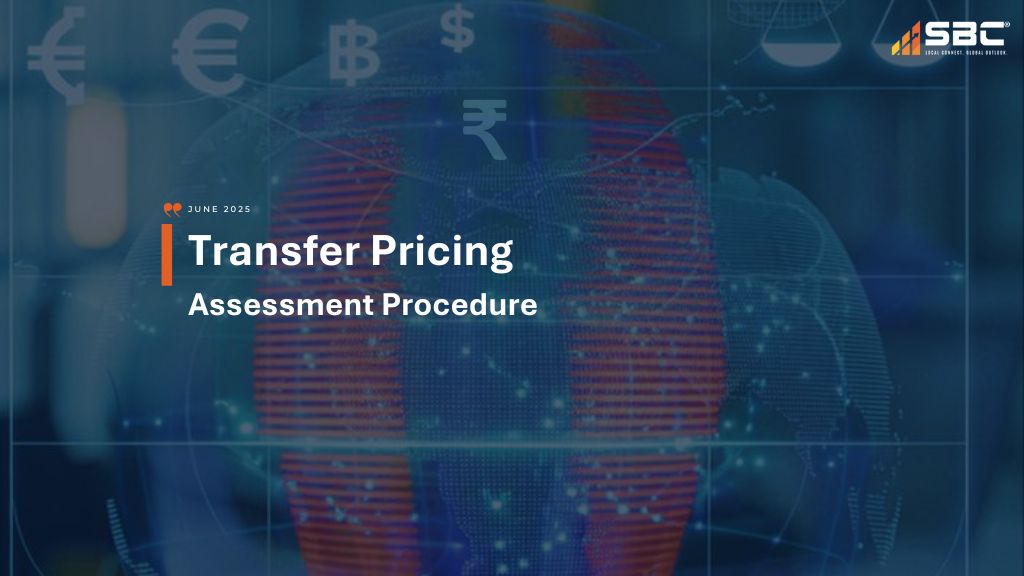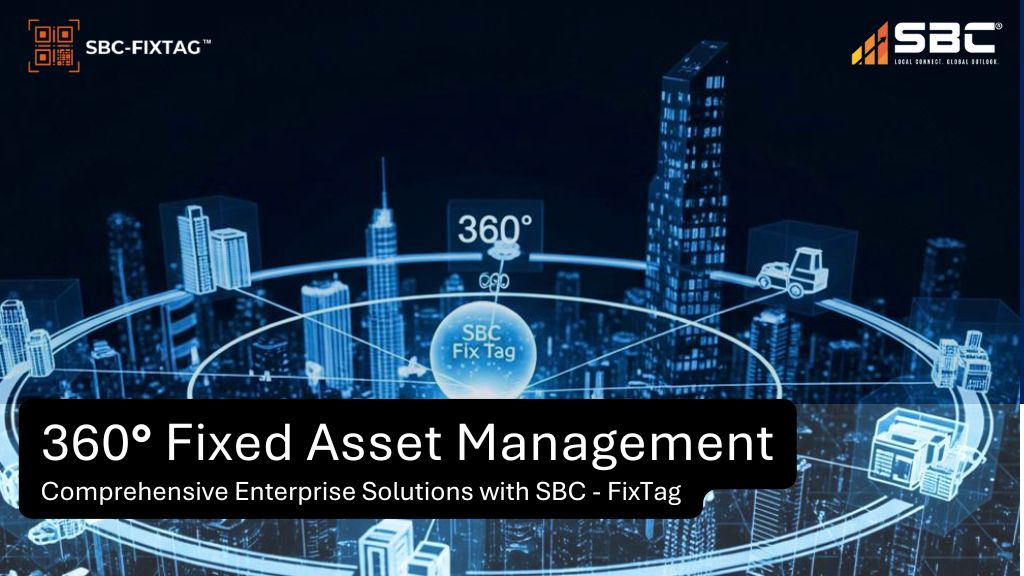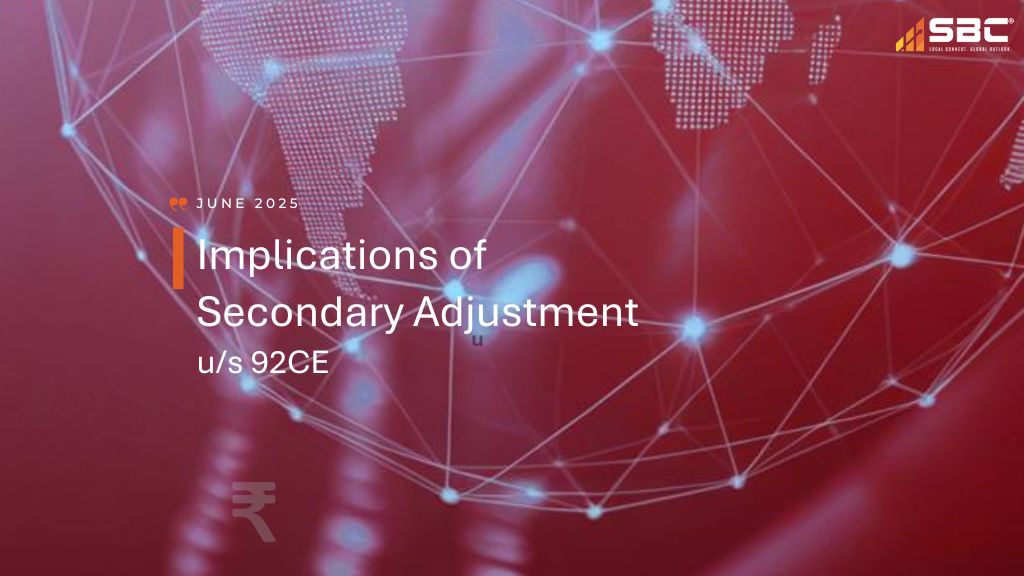Transfer Pricing Assessment Procedure
Home > Transfer Pricing Assessment Procedure

June 16, 2025
Transfer Pricing Assessment Procedure
Foresight for Taxpayers
It’s crucial for taxpayers to effectively manage domestic litigation through proactive foresight at every stage—from pre-litigation assessment to final resolution and enforcement. Taxpayers should maintain robust documentation, assess litigation risks early, and align their positions with judicial precedents and departmental guidance.
Knowing the litigation procedure is not optional—it’s essential. A single misstep in procedural compliance, such as missing a timeline or filing the wrong form, can lead to dismissal or weaken the case. Awareness and preparedness are as important as the technical position itself. Timely responses to notices, strategic decision-making on appeals, and readiness for alternative dispute resolution mechanisms such as the DRP or settlement schemes can significantly reduce prolonged litigation.
A well-structured litigation strategy not only mitigates potential exposure but also ensures consistency in legal positions across assessment years, ultimately contributing to efficient dispute resolution and improved outcomes. The CBDT’s Instruction No. 3/2016 lays out clear parameters for risk-based scrutiny—providing taxpayers with visibility into what triggers an assessment.
CBDT Instruction No. 3/2016: Framework for Risk-Based Selection and Referral of TP Cases
• CBDT Instruction No. 3/2016 marks a significant transition from the earlier monetary threshold- based approach (as per Instruction No. 15/2015) to a risk-based selection mechanism for Transfer Pricing (TP) audits.
• If a case is selected for scrutiny under TP risk parameters (either via CASS or manual selection), the Assessing Officer (AO) must mandatorily refer the matter to the Transfer Pricing Officer (TPO).
• The AO is barred from conducting TP analysis independently in such cases.
• The AO must also refer the case to the TPO even if selected on non-TP parameters, if any of the following is observed:
– Non-filing of Form 3CEB (Accountant’s Report)
– Non-disclosure of international transactions or Specified Domestic Transactions (SDTs) in the report
– Prior TP adjustment of INR 10 crore or more in earlier years, upheld or under appeal
– Findings from search/seizure/survey indicating TP issues
• This instruction prioritizes complex and high-impact TP cases instead of just high transaction value.
• Reduces subjective referrals and avoids unnecessary TP litigation.
• Acknowledges that TP is a specialized function—to be handled by trained TPOs only.
• Targets multi-jurisdictional transactions, especially those involving intangible assets or group synergies, as high-risk.
Transfer Pricing Assessment Procedure
Domestic Litigation Cycle

• Referral to TPO: In case of international transactions, the AO refers the matter to the TPO under Section 92CA(1).
• TPO Order: TPO examines the arm’s length nature of international transactions and issues a TPO order with proposed adjustments, if any.
• Draft Assessment Order: Based on the TPO’s findings, the AO issues a draft assessment order u/s 144C(1) for eligible assessee.
• Filing of Objections with DRP u/s 144C(2): The assessee has 30 days to accept the draft order or file objections with the DRP u/s 144C(2). If DRP objections are filed, the AO cannot pass the final order until DRP directions are received. DRP issues directions within 9 months, after which the AO passes the final order in line with those directions.
• Final Assessment Order: If no objections are filed, the AO passes the final order as per the draft order.
Transfer Pricing Assessment Procedure
• Appeal before CIT(A): After the final order is passed, if the assessee is aggrieved, an appeal can be filed before the CIT (A) within 30 days of receipt of the final order. CIT(A) reviews and disposes of the appeal, typically within 1 to 2 years.
• Appeal before ITAT: If still dissatisfied, the assessee may file a appeal to the ITAT within 60 days of the CIT(A) order.
• Appeal to High Court and Supreme Court: Further appeals can be made to the High Court within 120 days and Supreme Court within 90 days on substantial questions of law.
• Litigation Timeline: The entire litigation cycle, if pursued fully, can span 8 to 15 years depending on the complexity and jurisdiction.
Emerging TP Litigation Issues

Transfer Pricing Assessment Procedure
Steps to Avoid TP Litigation

How can SBC assist you?
With a strong hold on Indian transfer pricing controversy management and emerging TP disputes, SBC has a proven track record of litigation wins and supporting TP clientele with a result-oriented approach and cost-benefit analysis. We can support your business with the following aspects:
- Representation before various forums, including drafting appeals and submissions.
- Strategizing the approach before tax authorities, considering facts and judicial precedents.
- Case Law Compilations for specific TP disputes, leveraging our TP knowledge database and research repositories.
- Transfer Pricing Health Check-Up to avoid or mitigate risks.
- TP Due Diligence and Risk Assessment.
- Evaluation of alternative dispute resolution and prevention mechanisms for repeated or evolving TP disputes.
Verify Email
Verify your email address below to download the PDF
CONTACT US
RELATED POSTS
-
 24 Sep 2025Transfer Pricing (TP) Compliance Developments in Mauritius - Finance Act 2025
24 Sep 2025Transfer Pricing (TP) Compliance Developments in Mauritius - Finance Act 2025 -
 24 Sep 2025360° Fixed Asset Management
24 Sep 2025360° Fixed Asset Management -
 20 Jun 2025Implications of Secondary Adjustment u/s 92CE
20 Jun 2025Implications of Secondary Adjustment u/s 92CE -
 16 Jun 2025Transfer Pricing Assessment Procedure
16 Jun 2025Transfer Pricing Assessment Procedure -
 31 May 2025ITAT Delhi Ruling on Treaty Abuse Allegation and DTAA Benefits
31 May 2025ITAT Delhi Ruling on Treaty Abuse Allegation and DTAA Benefits



